After a leisurely train ride from Sevilla we arrived in Granada and checked into our digs at the Parador hotel. Wow! What a place to stay. We are so glad we picked it as our “splurge” lodging of the trip. It is actually an old monastery that sits inside the walls of the Alhambra. Here is the view from our window.
The lily pond is well populated with frogs who can’t stop talking.
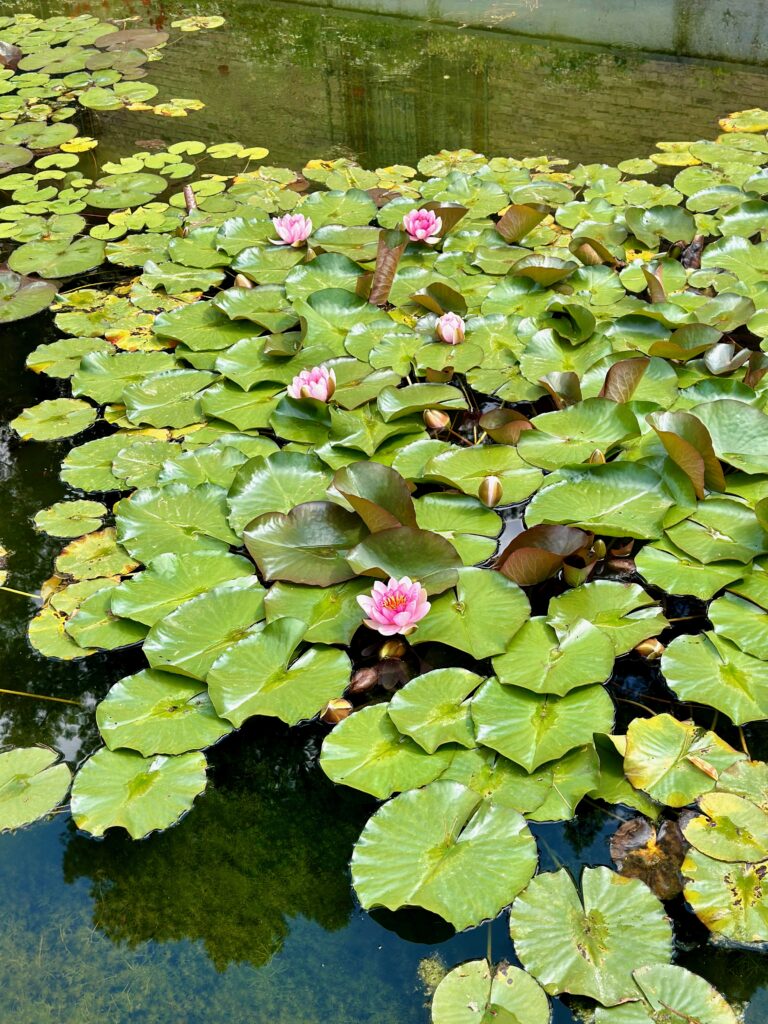
The Alhambra has a deep history and I won’t pretend to rattle it off here, instead just a quick synopsis below (thank you Wikipedia) and if you want a deeper dive just click the link.
The complex was begun in 1238 by Muhammad I Ibn al-Ahmar, the first Nasrid emir and founder of the Emirate of Granada, the last Muslim state of Al-Andalus. It was built on the Sabika hill, an outcrop of the Sierra Nevada which had been the site of earlier fortresses and of the 11th-century palace of Samuel ibn Naghrillah. Later Nasrid rulers continuously modified the site. The most significant construction campaigns, which gave the royal palaces much of their definitive character, took place in the 14th century during the reigns of Yusuf I and Muhammad V. After the conclusion of the Christian Reconquista in 1492, the site became the Royal Court of Ferdinand and Isabella (where Christopher Columbus received royal endorsement for his expedition), and the palaces were partially altered. In 1526, Charles V commissioned a new Renaissance-style palace in direct juxtaposition with the Nasrid palaces, but it was left uncompleted in the early 17th century. After being allowed to fall into disrepair for centuries, with its buildings occupied by squatters, the Alhambra was rediscovered following the defeat of Napoleon I, whose troops destroyed parts of the site. The rediscoverers were first British intellectuals and then other American and Northern European Romantic travelers. The most influential of them was Washington Irving, whose Tales of the Alhambra (1832) brought international attention to the site. The Alhambra was one of the first Islamic monuments to become the object of modern scientific study and has been the subject of numerous restorations since the 19th century. It is now one of Spain’s major tourist attractions and a UNESCO World Heritage Site.
I’m going to let pictures do the rest of the talking. We started with Charles the V Palace.
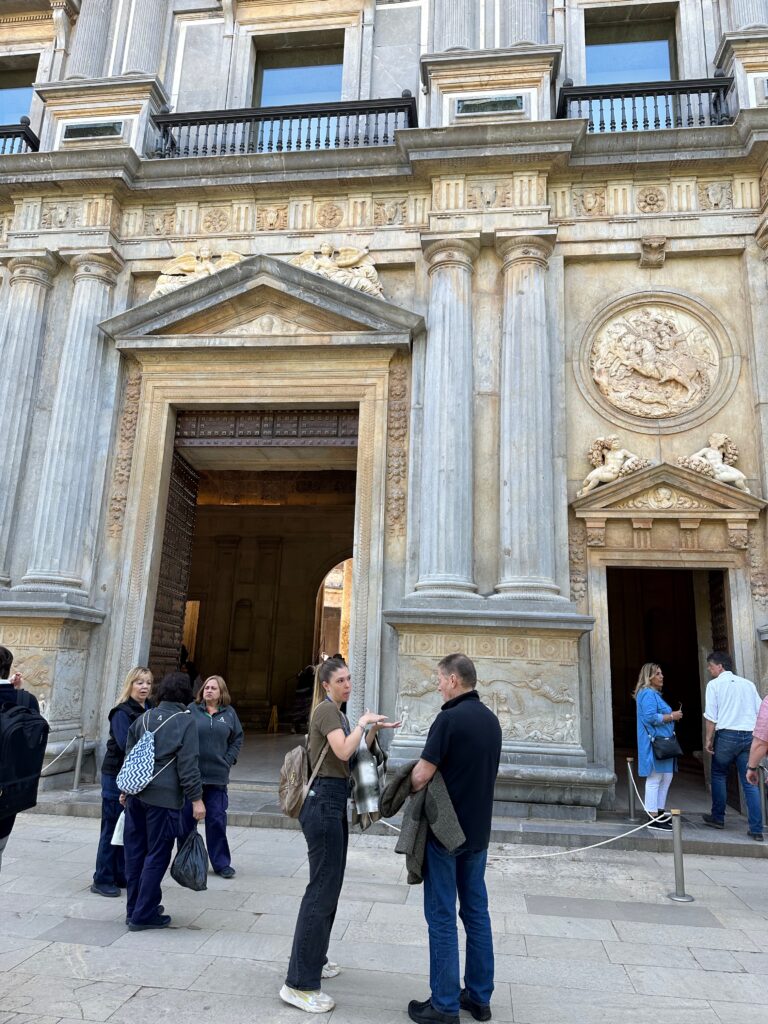
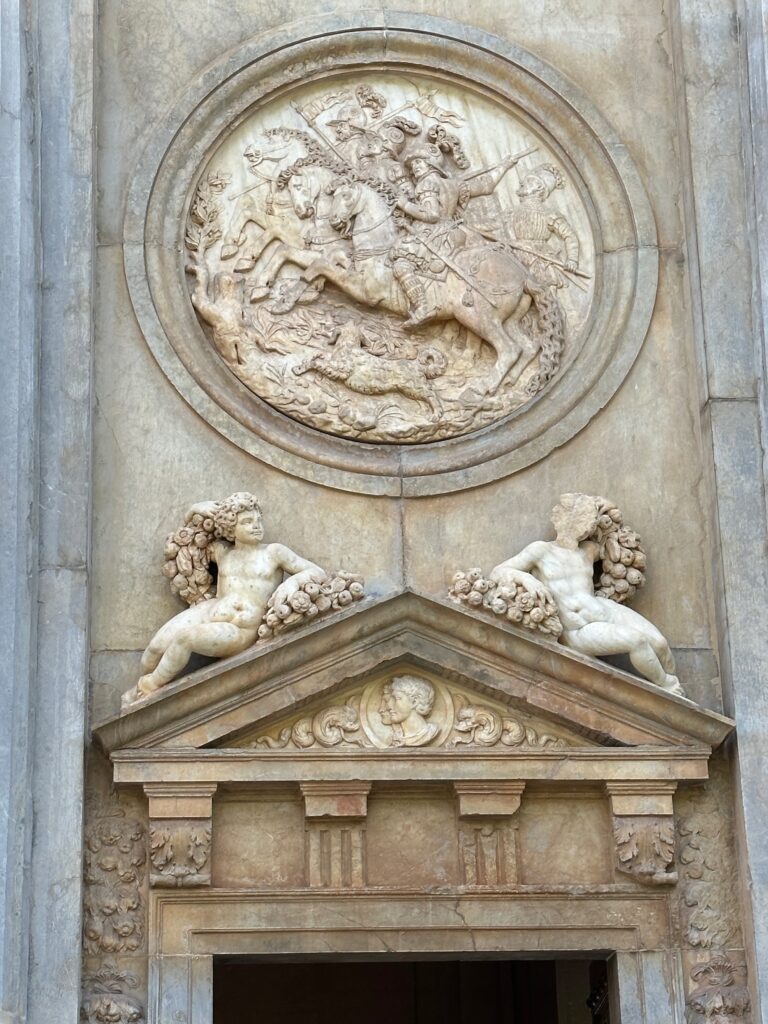
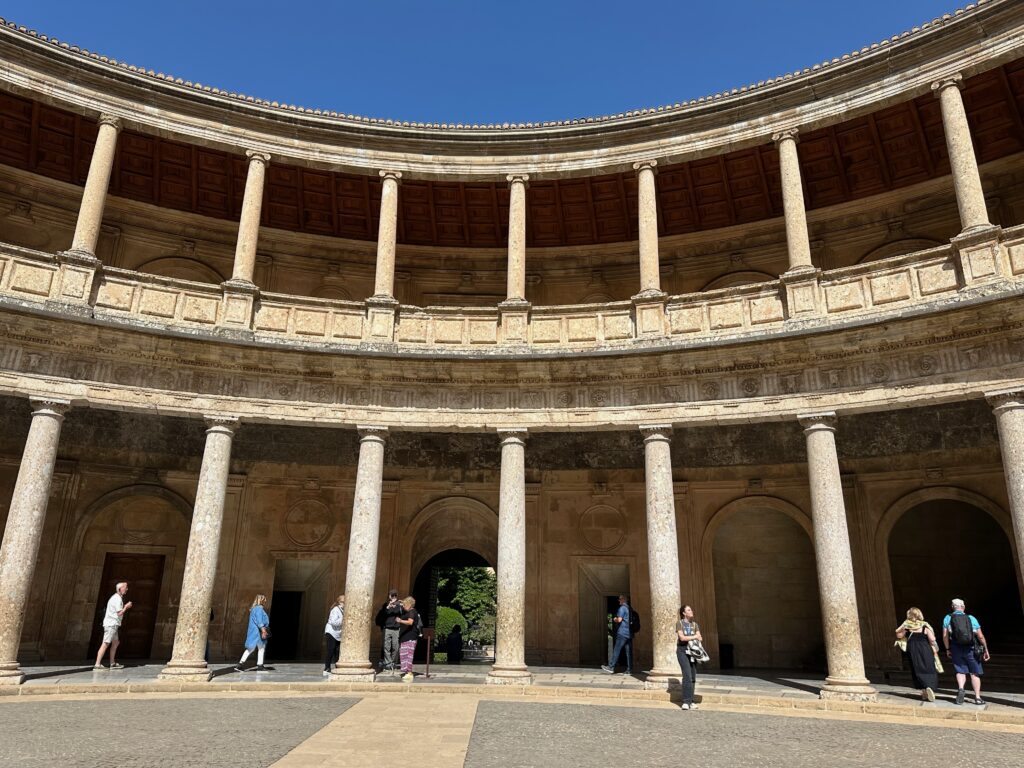
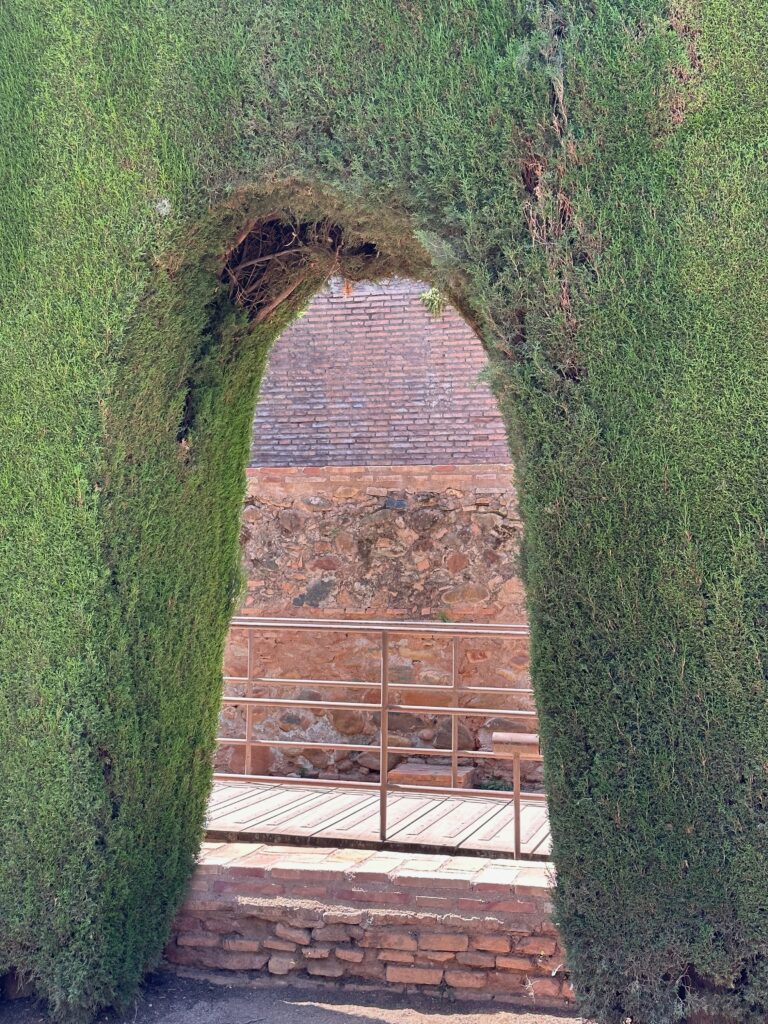
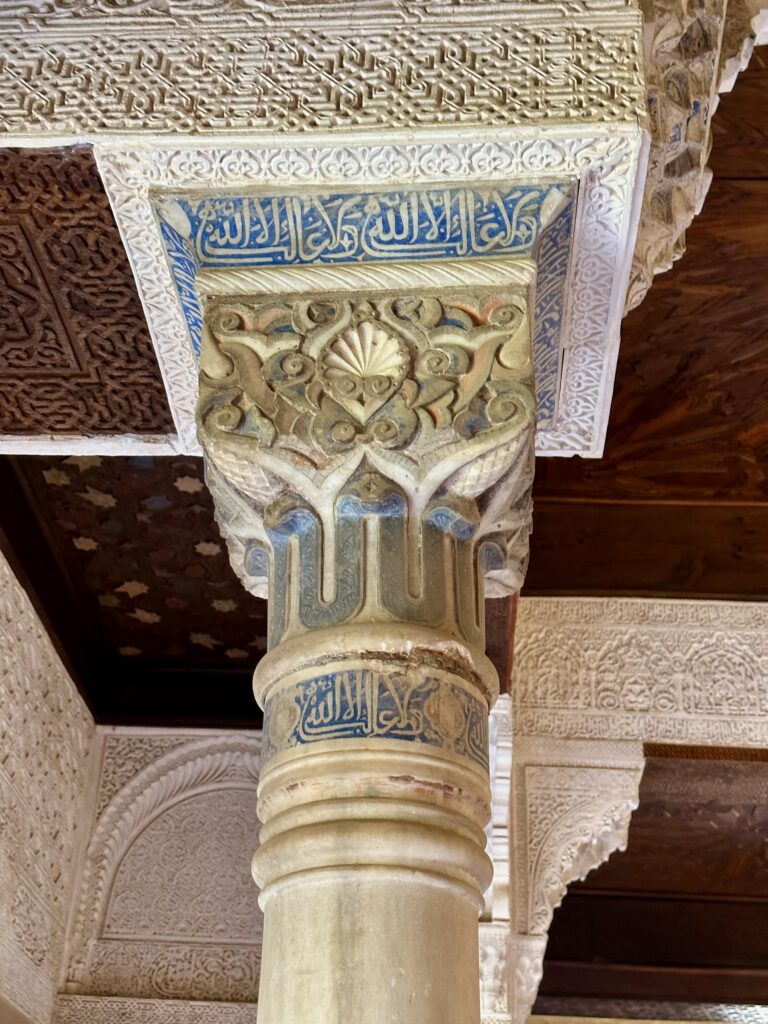
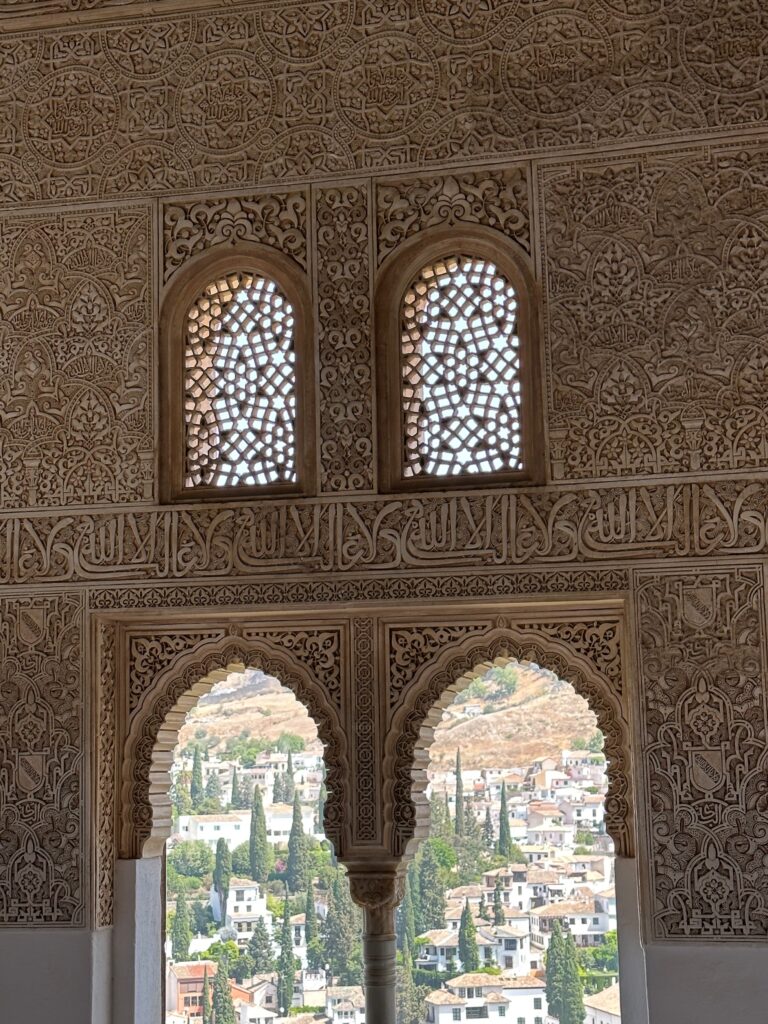
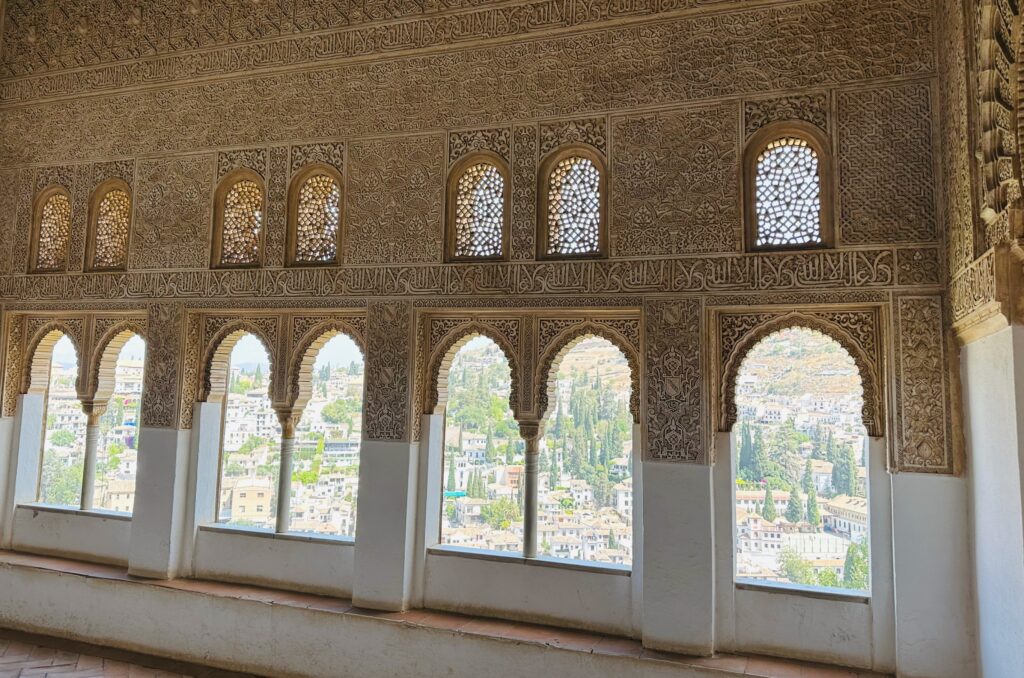
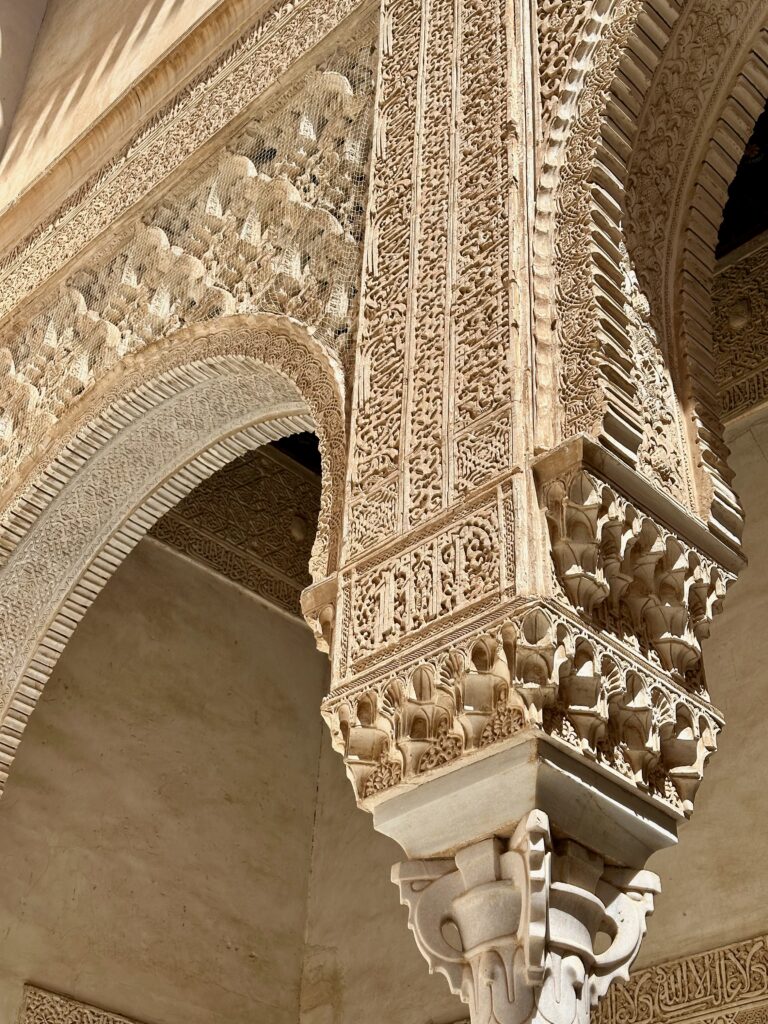
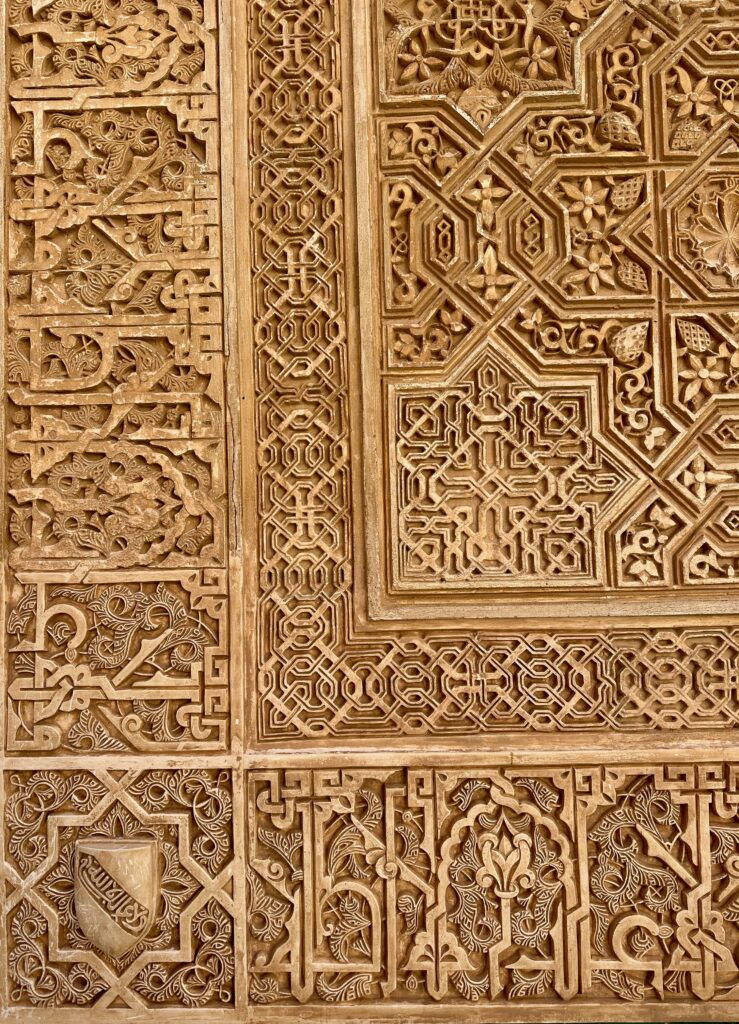
The inscription here means, “Only Allah wins”, and is seen throughout the complex.
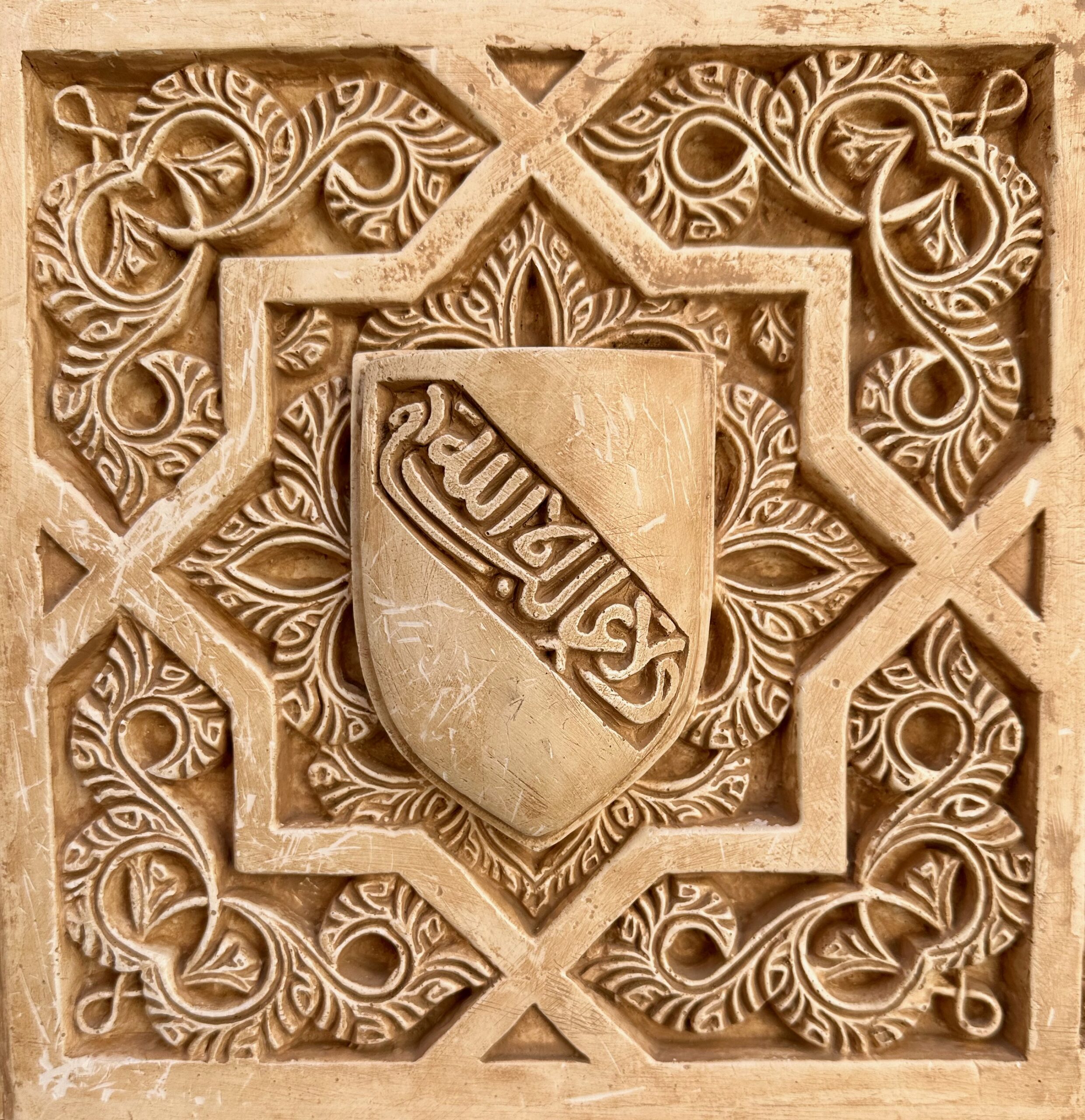
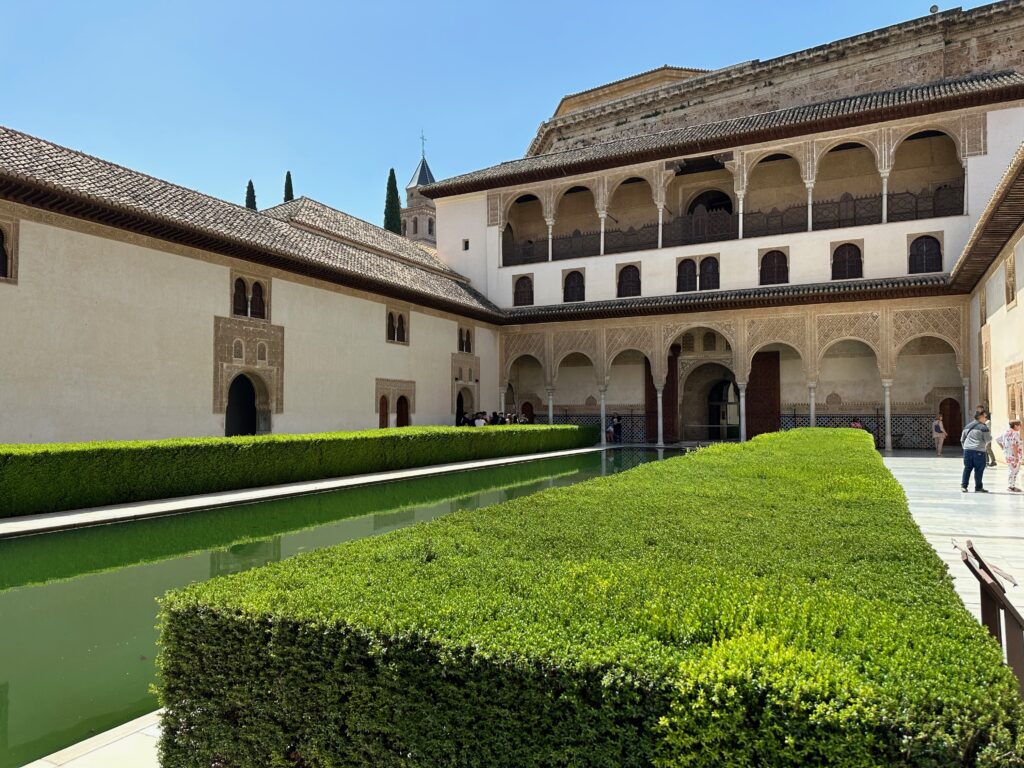
There are feral cats living here and this one did catch the fish.
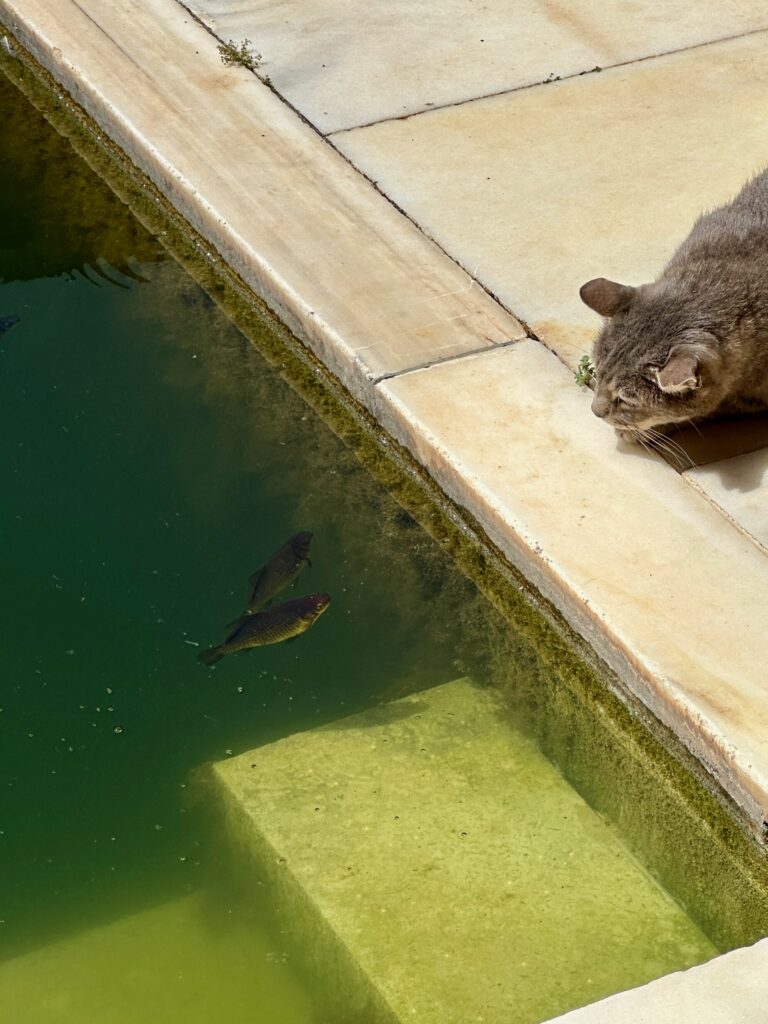
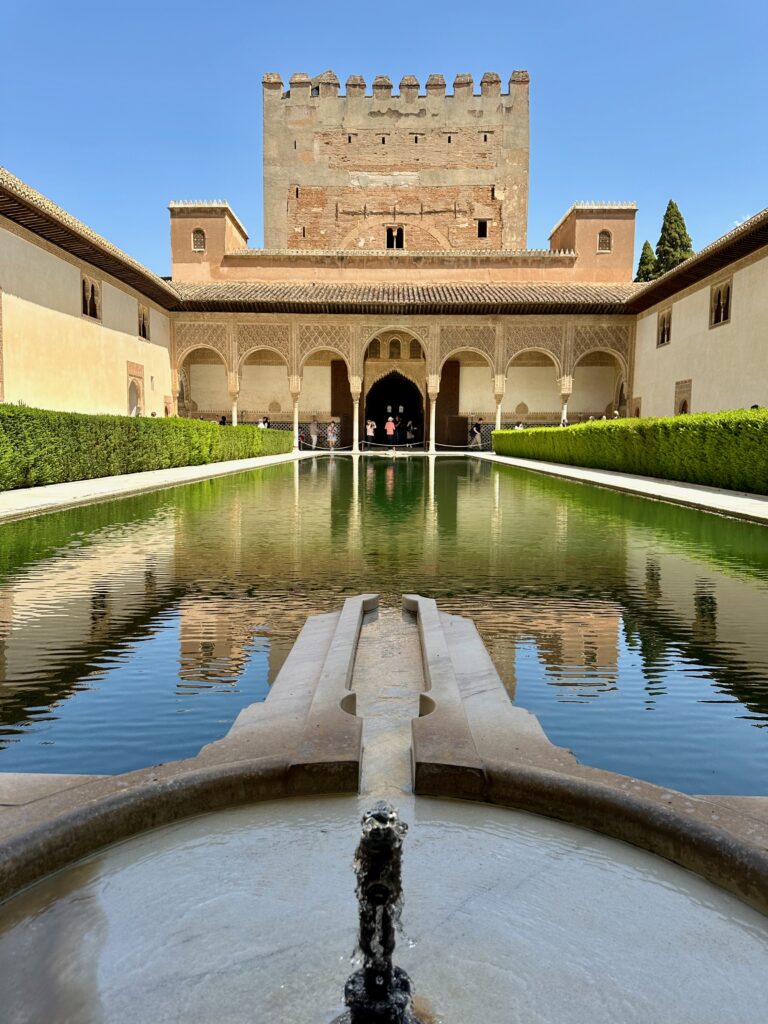
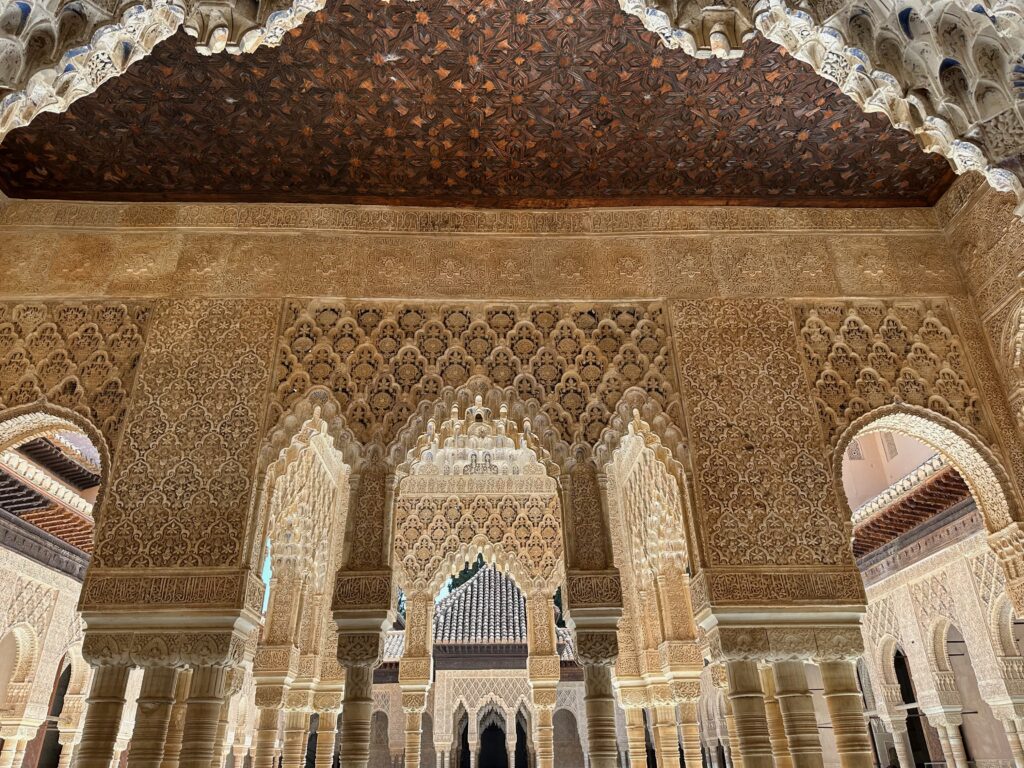
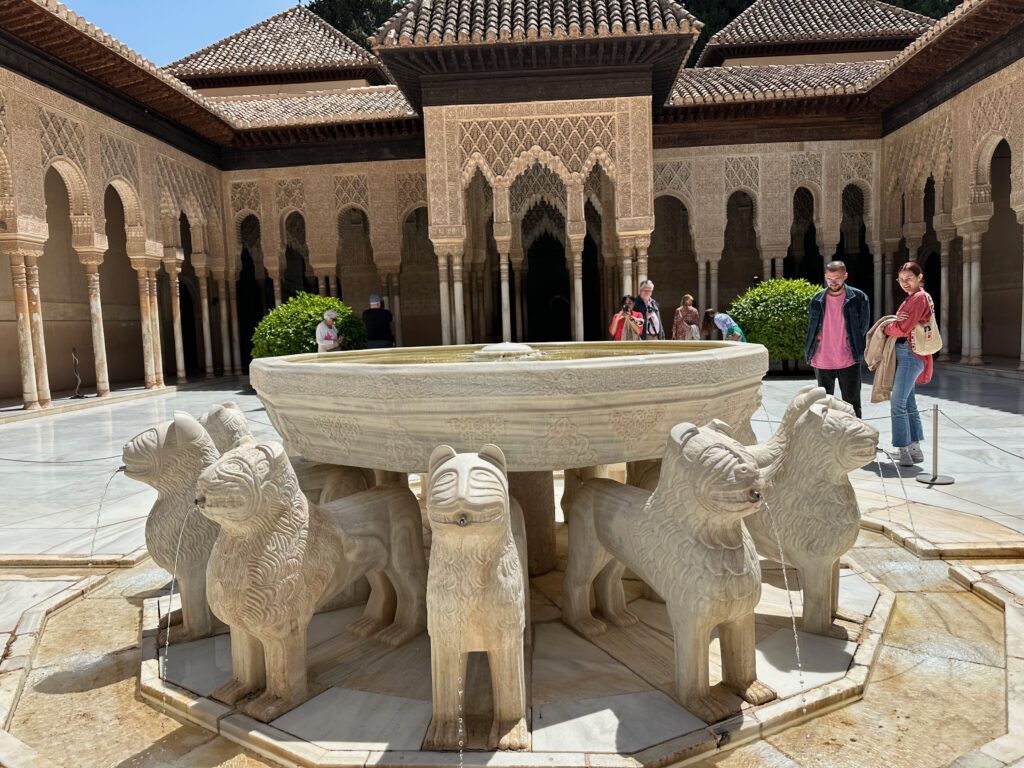
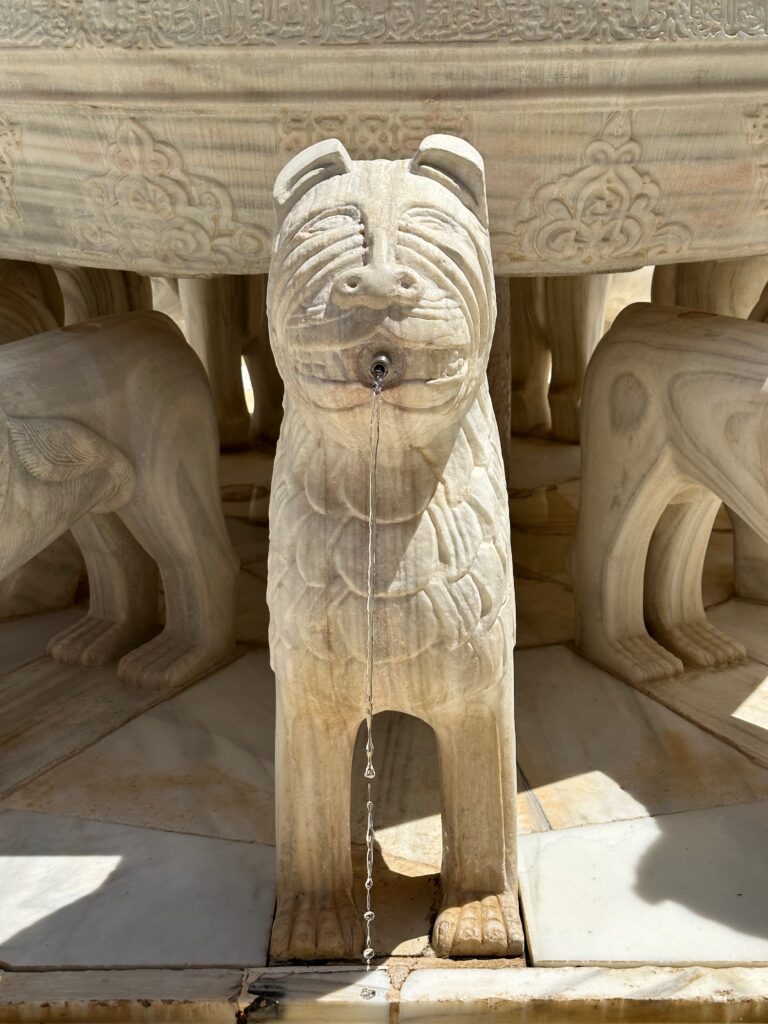
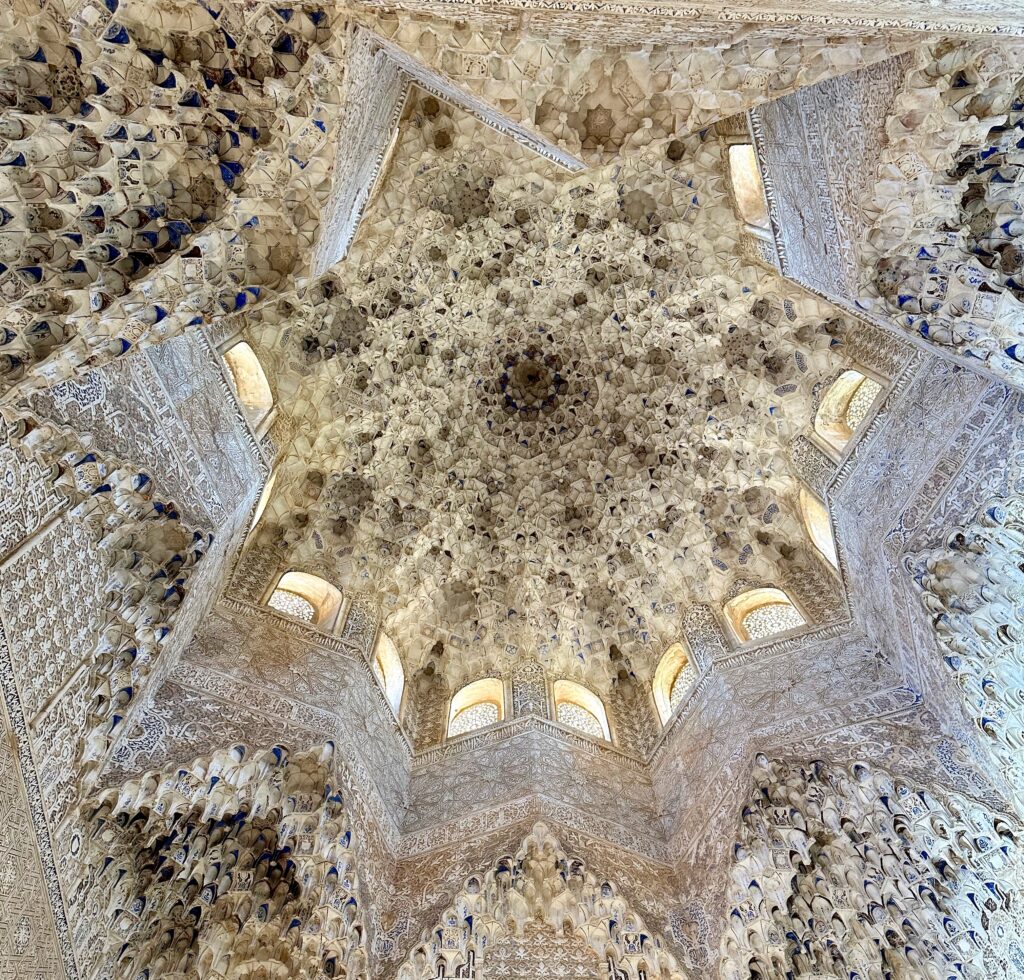
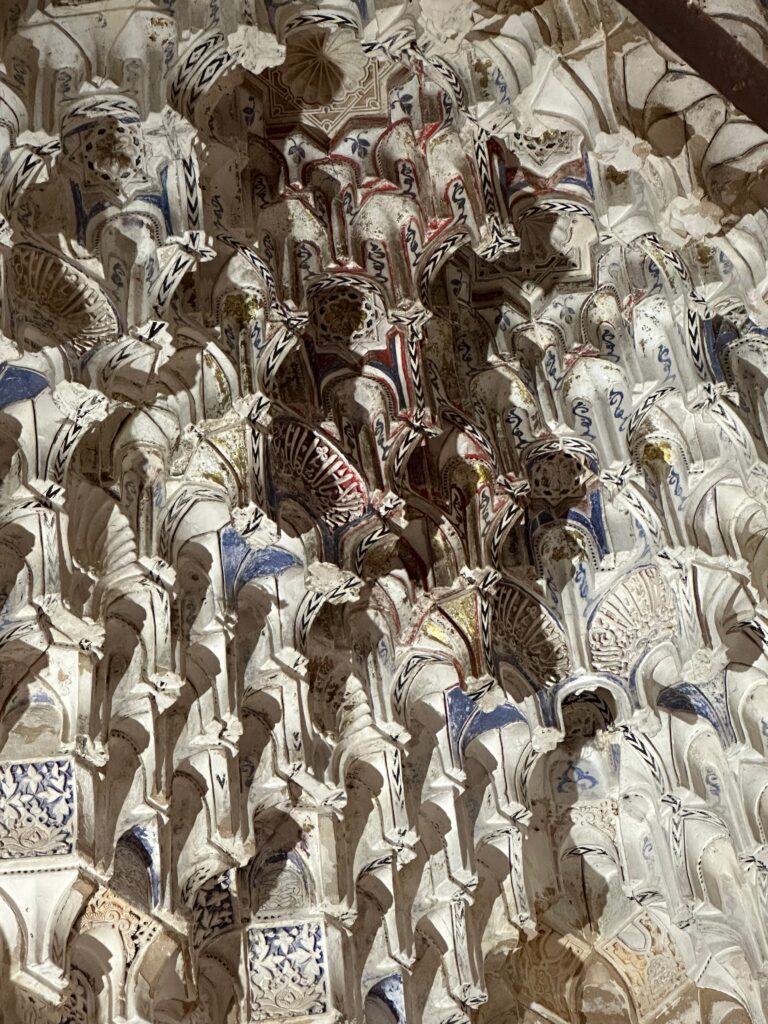
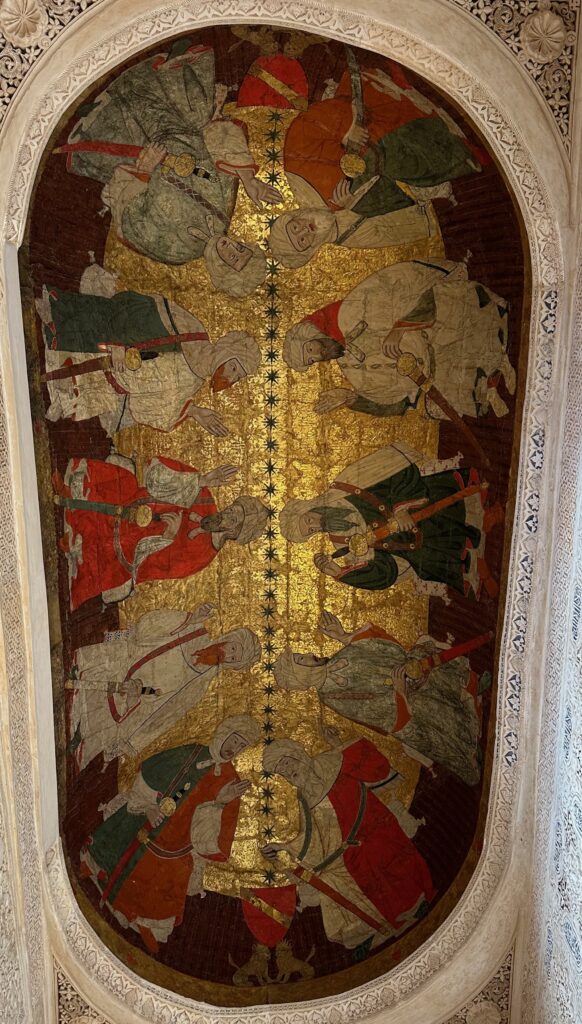
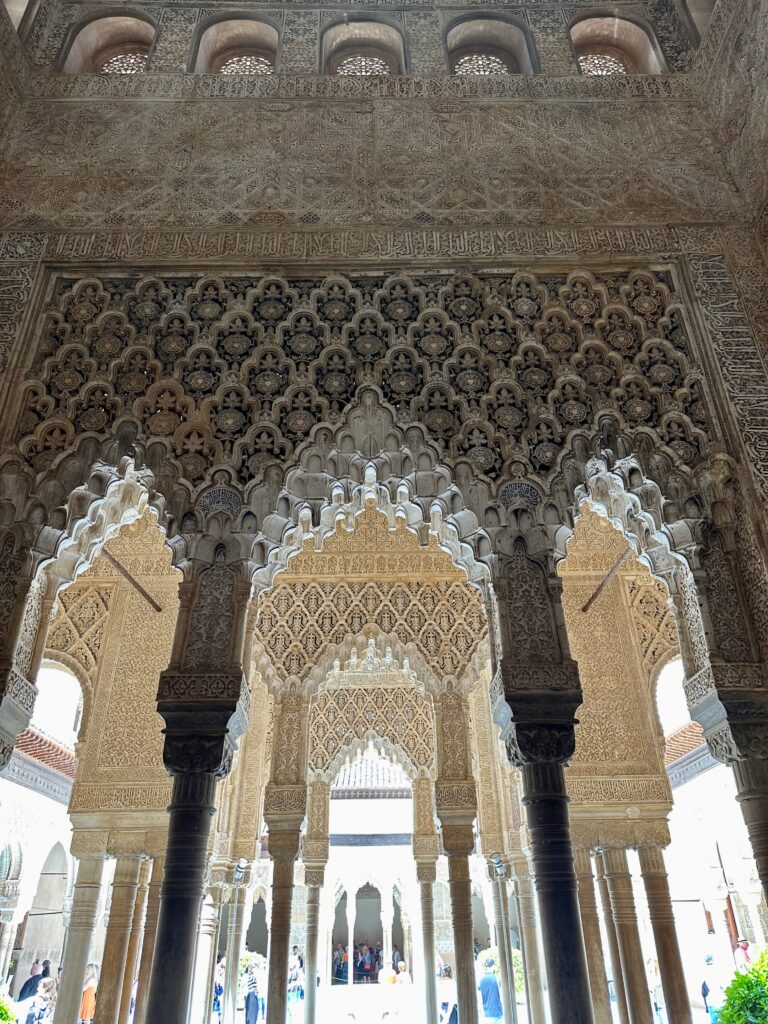
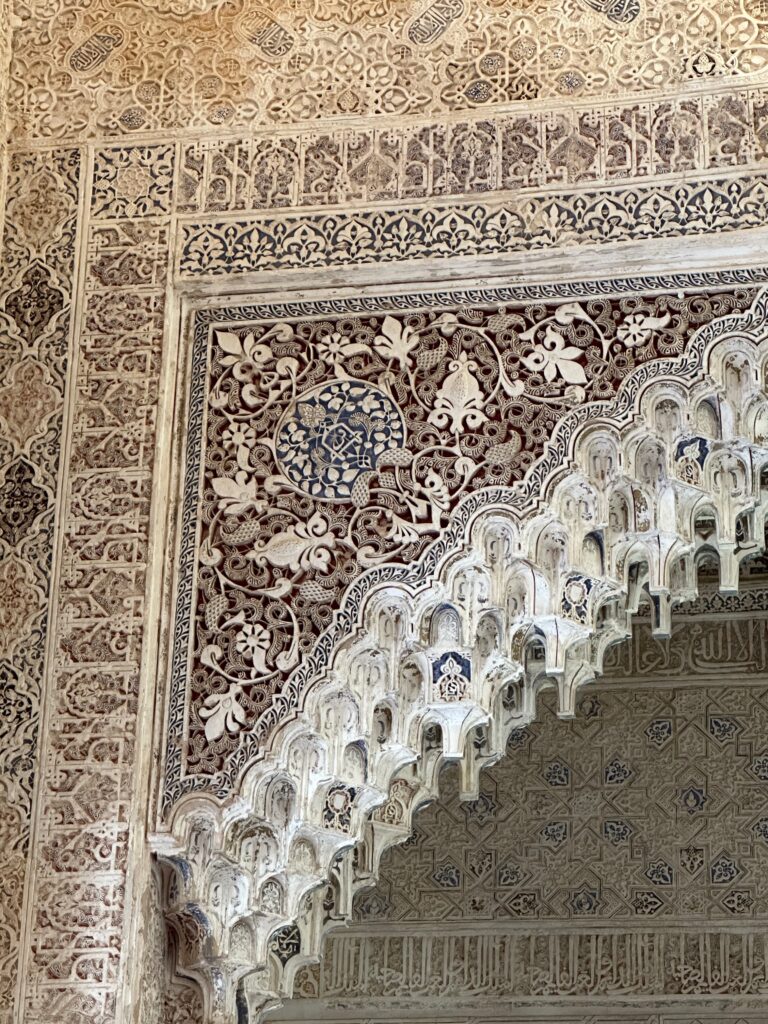
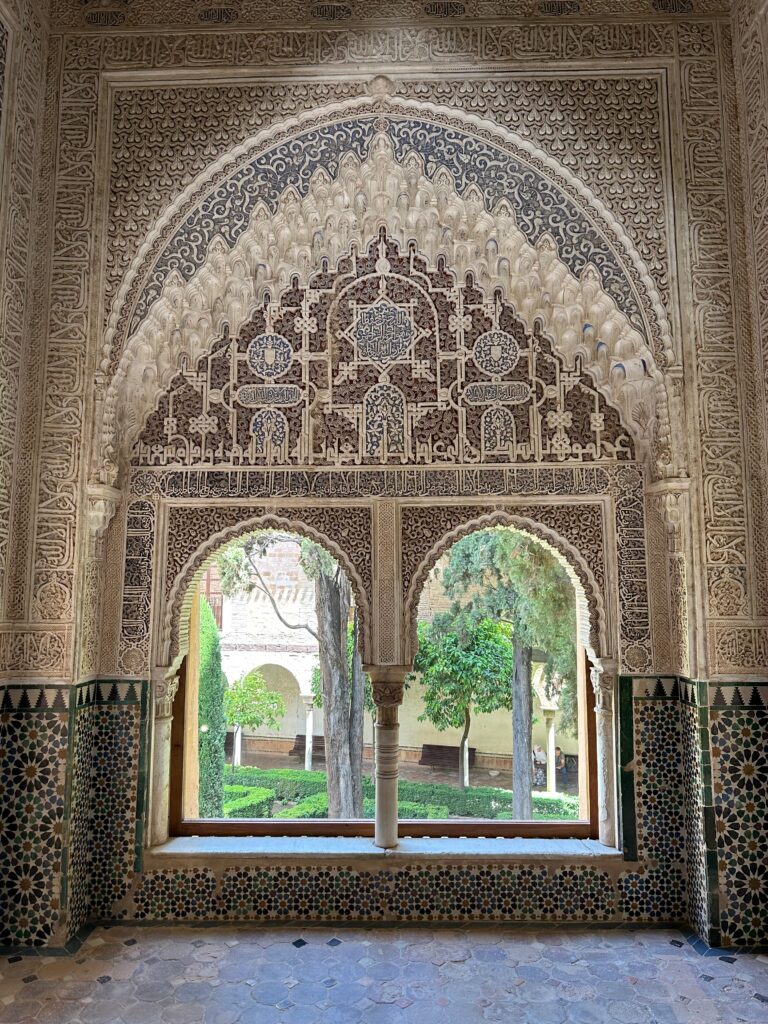
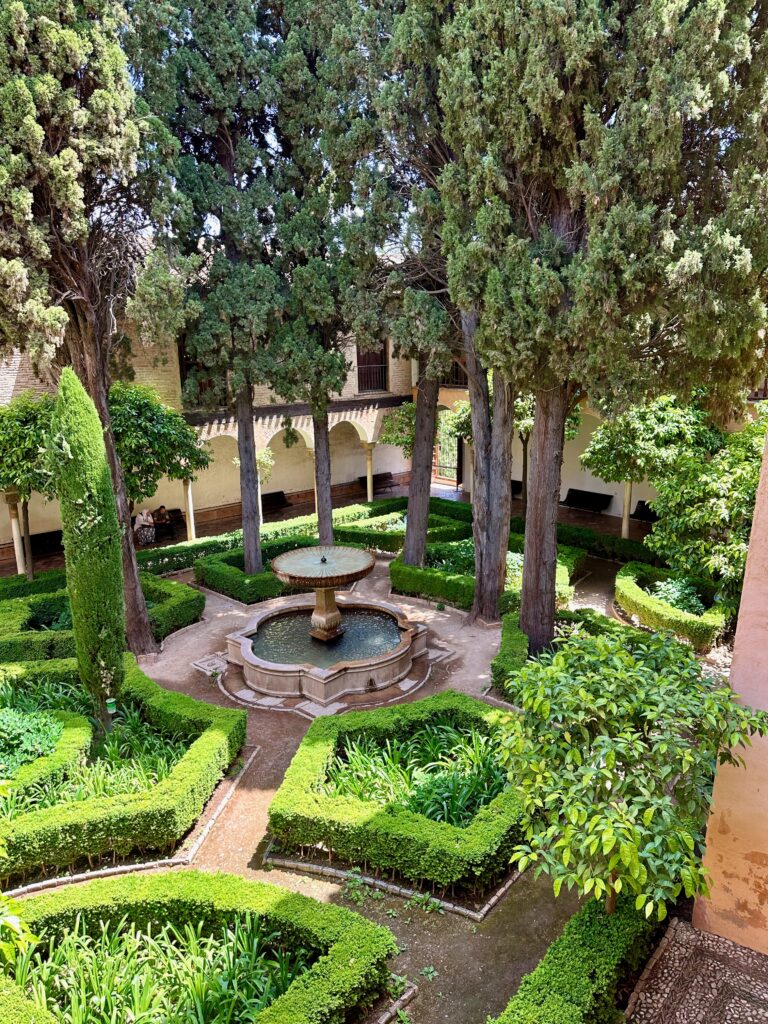
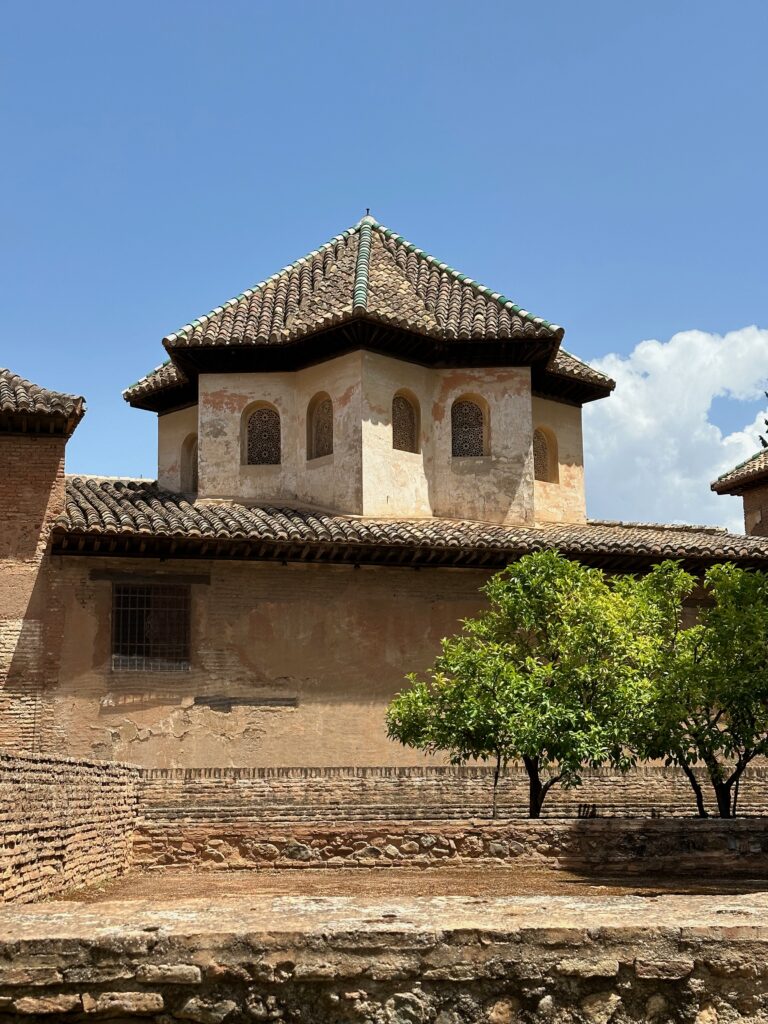
After a brief rest, we headed to the gardens of Generalife, just across a ravine from the Alhambra. This was built as a retreat for the Sultans and later the kings. Since there were no doors or security no one slept overnight in the palace, it was only used during the daytime.
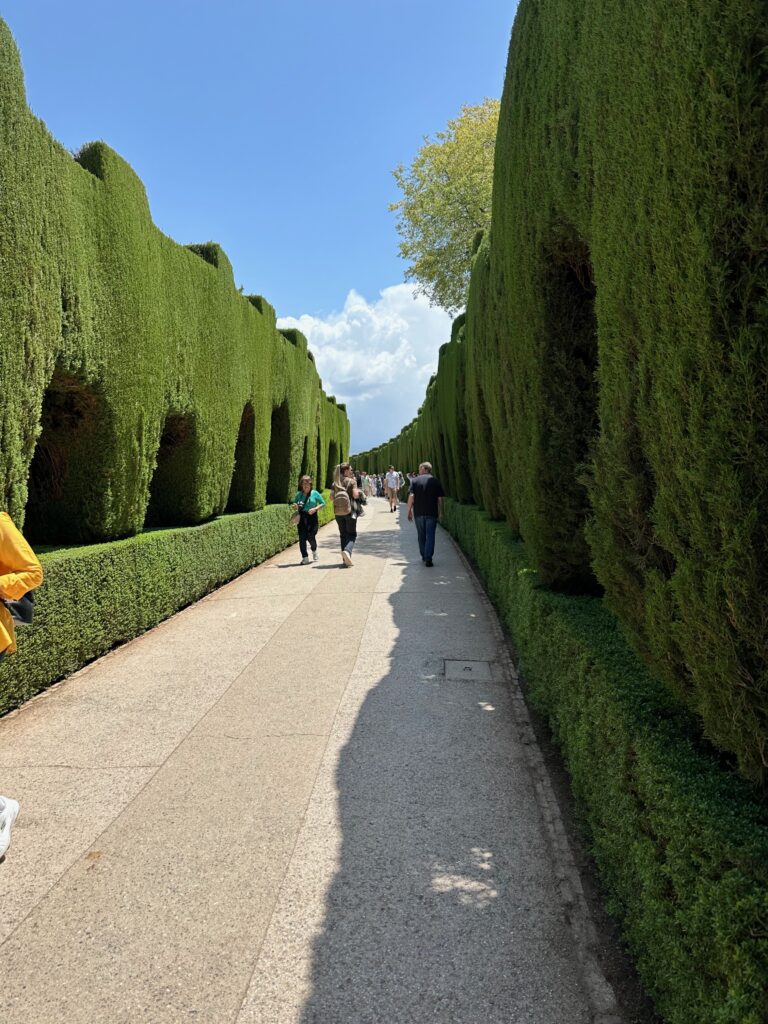
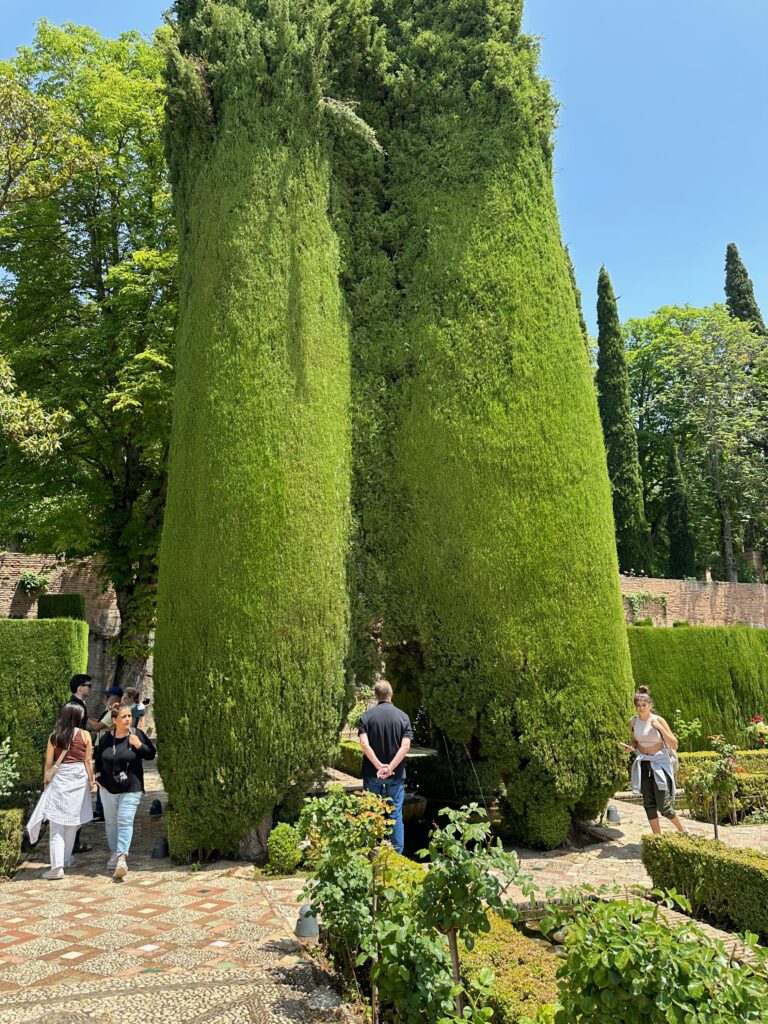
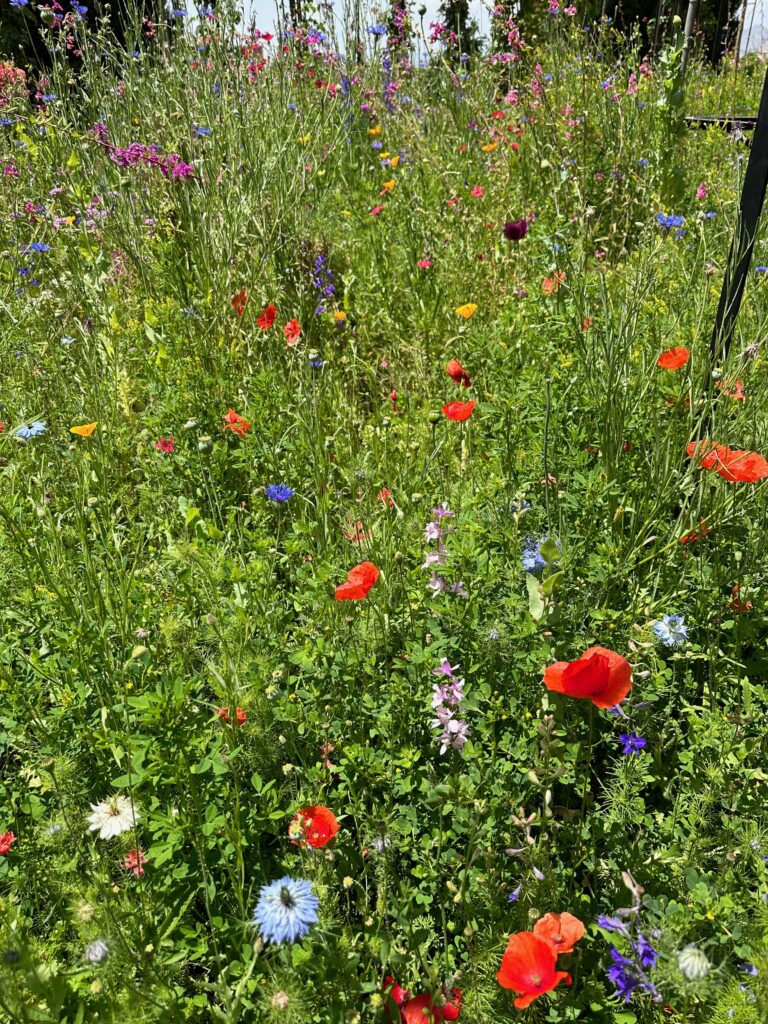
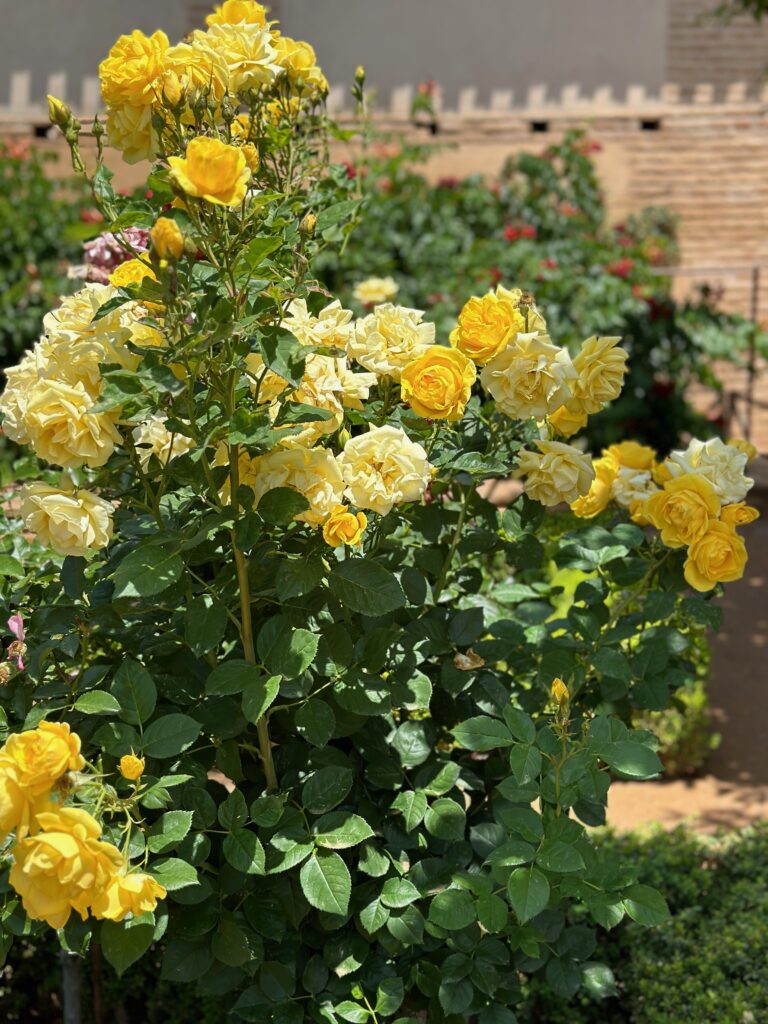
Walls covered in Jasmine.
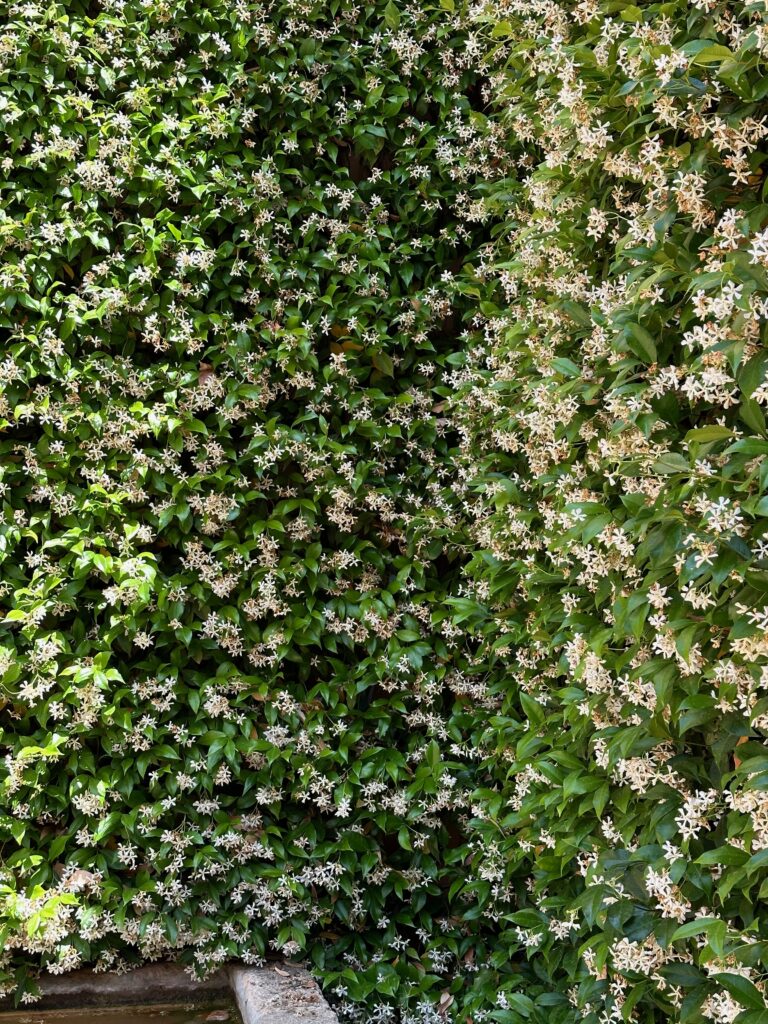
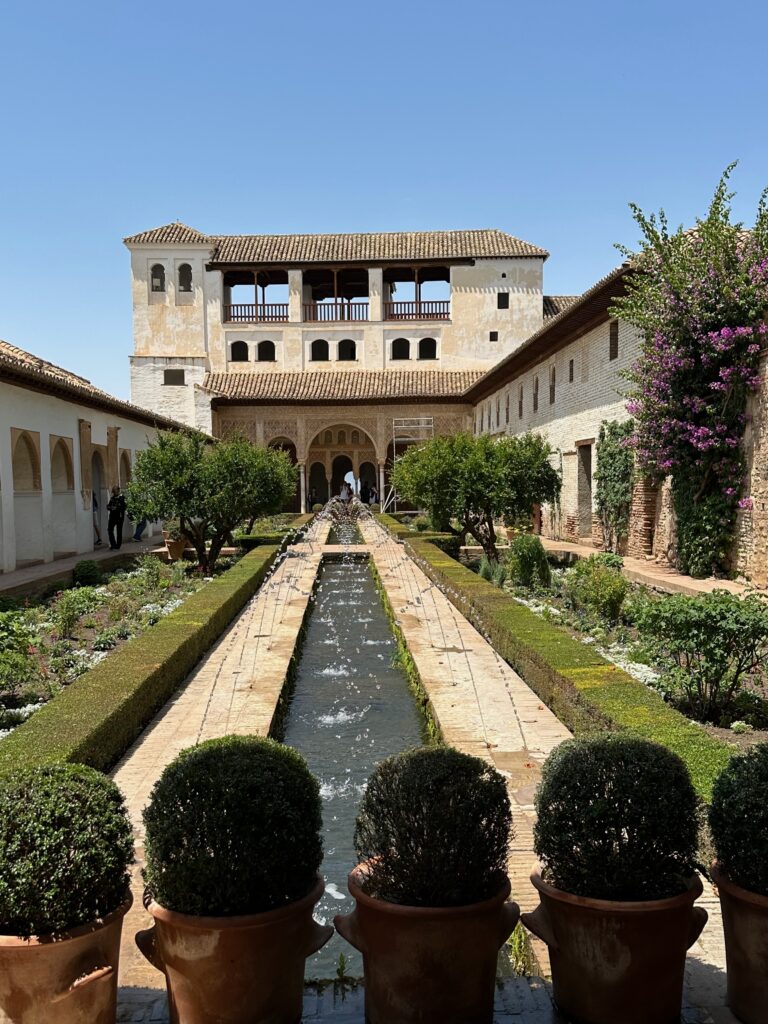
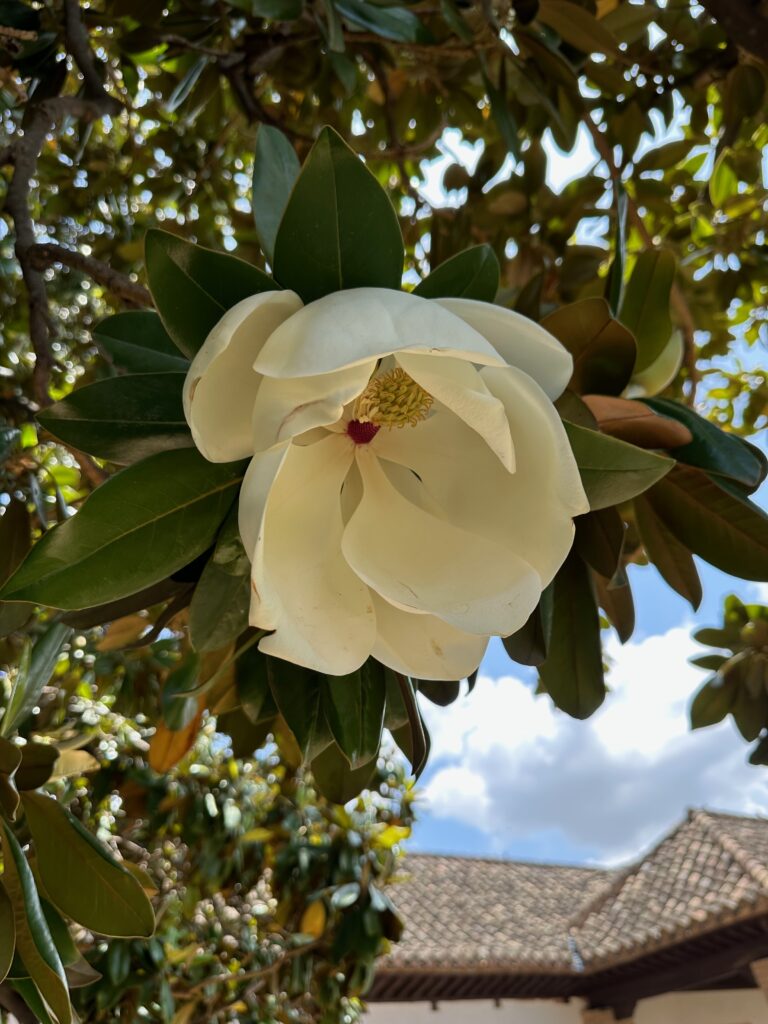
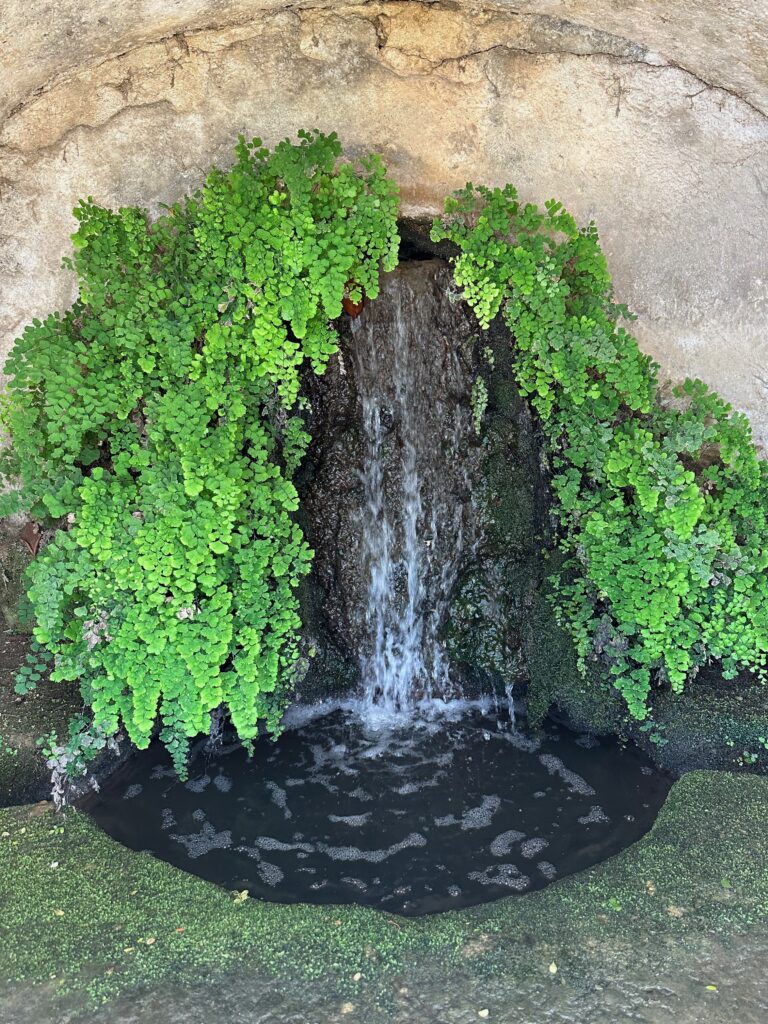
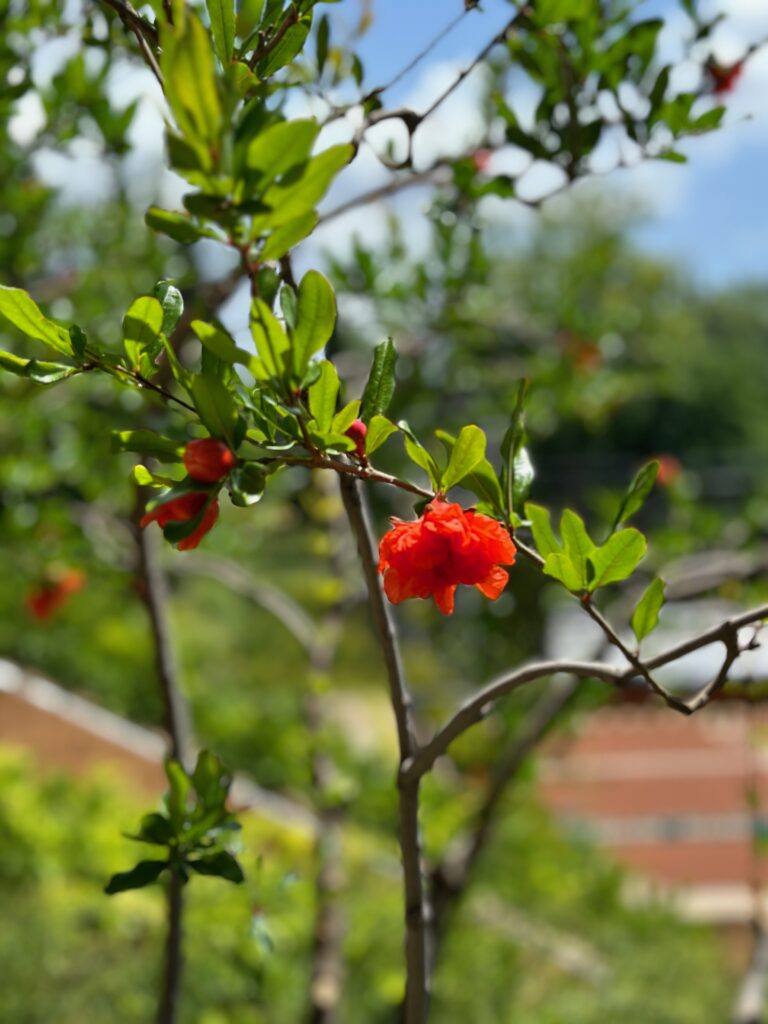
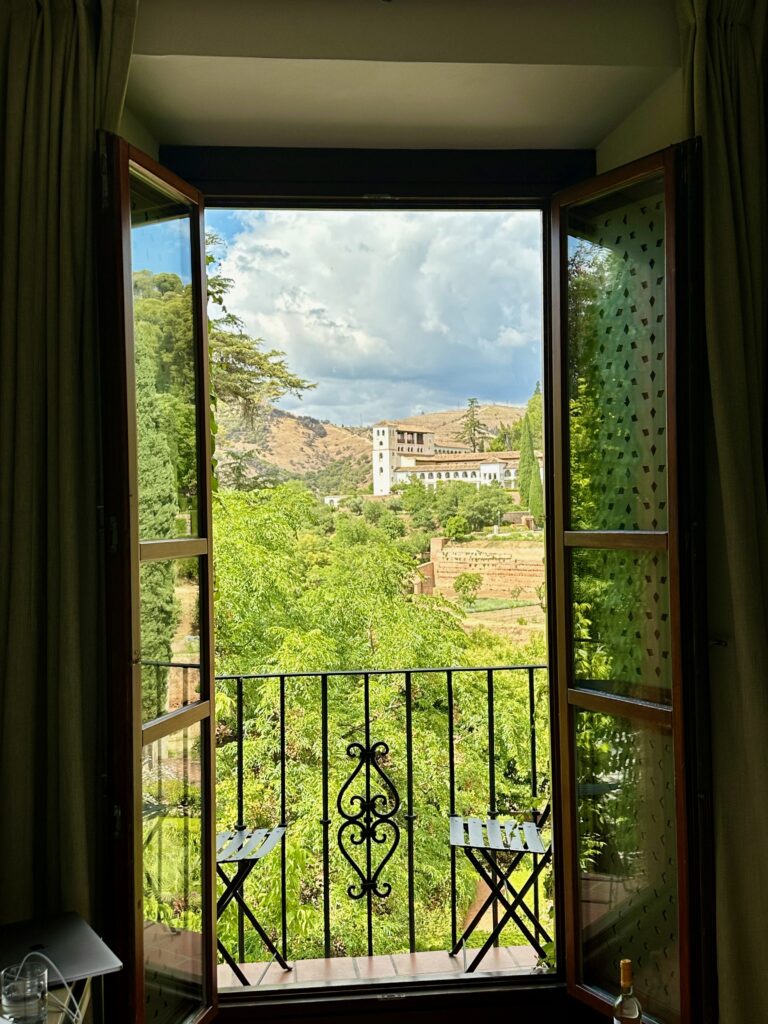
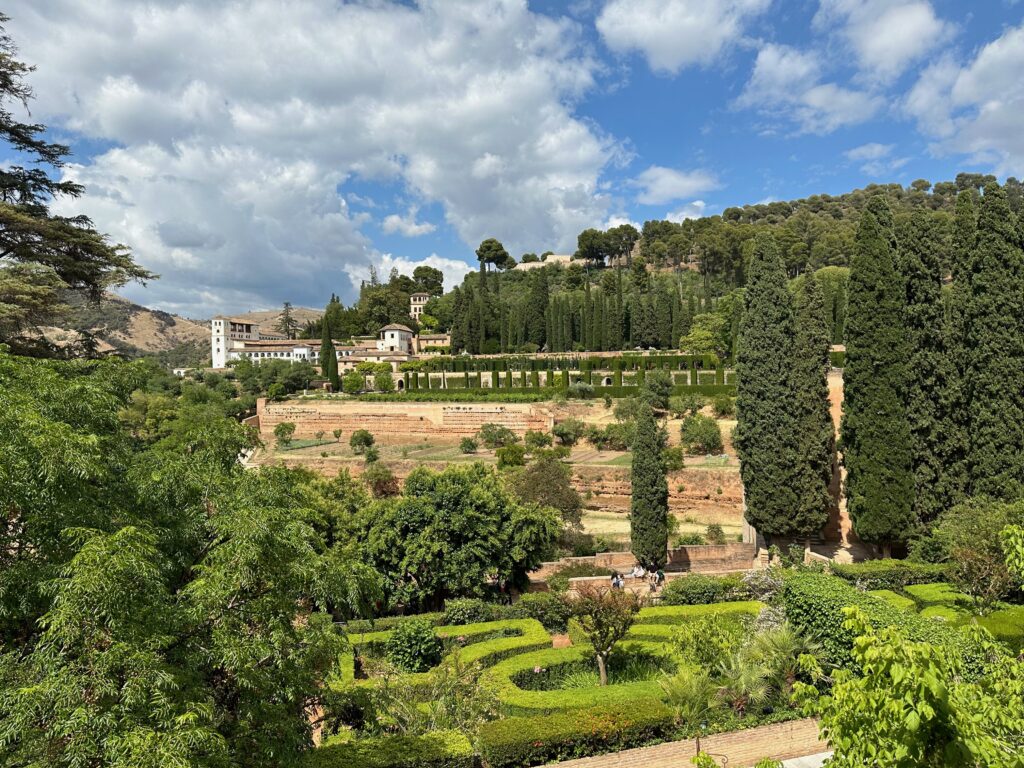
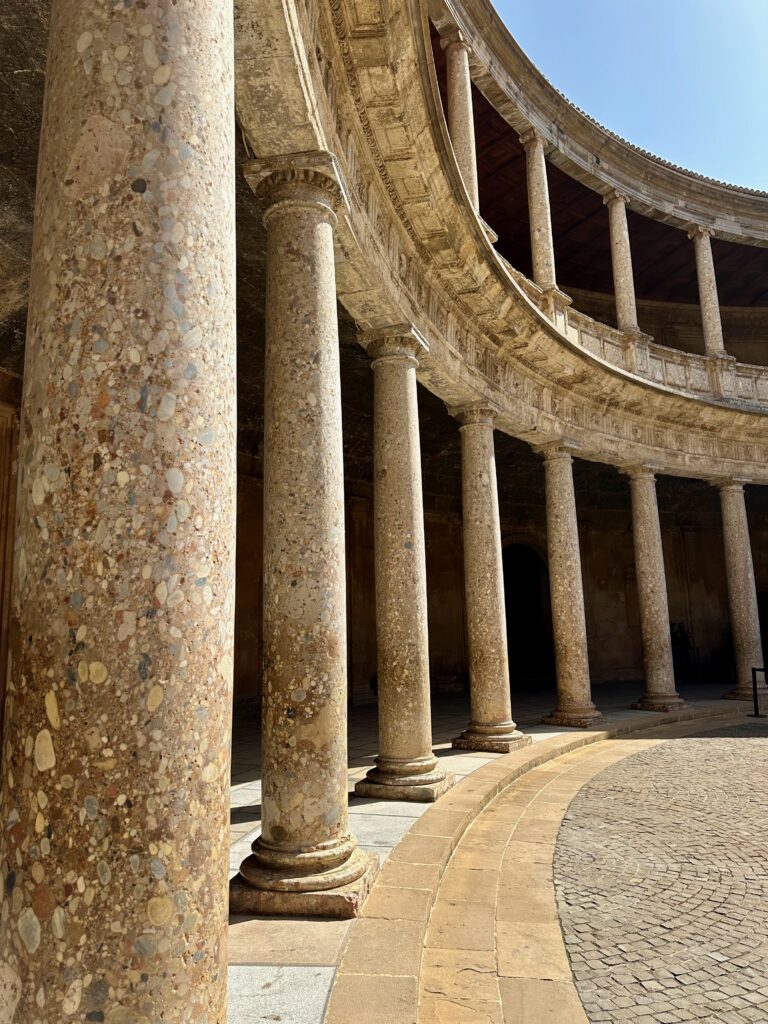
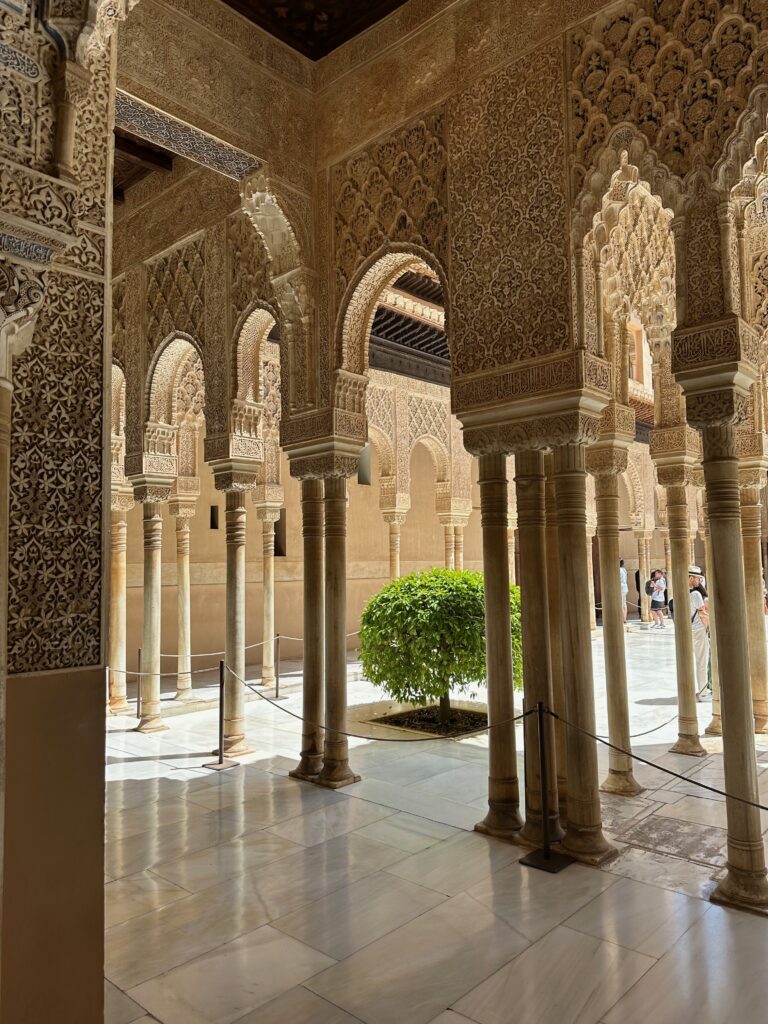
Unimaginable in scope and detail, but your photos give us a fine view. Thank you for a peek into this phenomenal place.
So nice to see your article and photos. I almost forgot how wonderful Granada and the area around the Alhambra are. I very much remember the aromatic flowers in the gardens.
Beautiful!